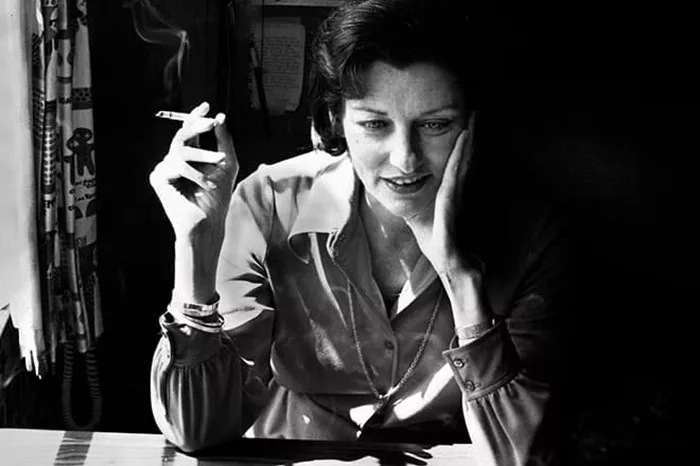Welcome to Poem of the Day – Flee On Your Donkey by Anne Sexton
Anne Sexton was one of the most powerful and personal poets of the 20th century. Her poetry often explored mental illness, depression, womanhood, and the tension between life and death. One of her deeply moving poems is “Flee On Your Donkey”, written during a time when she was in a mental hospital. This poem captures a moment of deep suffering, but it also carries hope, confusion, and honesty.
In this article, we will explain the poem line by line, theme by theme, using simple words and clear ideas.
Flee On Your Donkey Explanation
Background of the Poem
“Flee On Your Donkey” comes from Sexton’s 1969 book Live or Die, which won the Pulitzer Prize. She wrote many of these poems while she was in a psychiatric hospital. Sexton suffered from depression for most of her adult life. She used poetry as a form of therapy and self-expression.
The title of the poem refers to a line from the Bible, in the book of Isaiah: “Flee on your donkey.” It means to escape quickly and quietly, even if it’s in a strange or humble way.
Overview of the Poem
The poem describes Sexton’s experience in the mental hospital. It talks about the loneliness, fear, and emptiness she felt. But it also shows her struggle to understand herself. She uses images of being trapped, being treated like a child, and feeling like a ghost.
This is not a happy poem. But it is honest. And in its honesty, there is a kind of beauty.
Line-by-Line Explanation
Stanza 1:
“I stayed in your house for a long time…”
Sexton begins by speaking directly to someone—perhaps her reader, perhaps herself. The “house” is likely the hospital. She stayed there not as a guest, but as a patient. The tone is quiet, full of tiredness.
Stanza 2:
“You were like a god / and I was like a cat / watching a god.”
Here, Sexton compares the people in charge—doctors, nurses, perhaps God Himself—as powerful and distant. She is small and weak, like a cat. She watches but feels powerless to change anything.
Stanza 3:
“I lay on the floor like a cat…”
She repeats the cat image. She feels helpless, lying down, waiting for help. This image shows how depression can make people feel passive, quiet, almost invisible.
Stanza 4:
“I slept on the floor / and you turned your back…”
This is a heartbreaking moment. Sexton feels ignored, even by God. She is not comforted. The world keeps going, and she stays alone in her pain.
Stanza 5:
“Oh, I am sad, I am sad…”
This is one of the clearest lines in the poem. She says what she feels, without decoration. It is pure and true.
Themes in the Poem
1. Mental Illness
The poem is a cry from inside a depressed mind. Sexton talks about numbness, isolation, and confusion. The hospital is both a place of care and a place of fear.
2. Helplessness
Sexton feels powerless. She is treated like a child, told what to do, and made to feel small. The donkey in the title is slow, weak, but it still moves. That may be how she sees herself.
3. Spiritual Confusion
There are religious images in the poem. She refers to God, sin, and the idea of salvation. But she does not find comfort in religion. Instead, she seems angry or lost.
4. Escape and Suffering
The title suggests escape. To “flee” means to run away. But the poem shows that even if she leaves the hospital, the pain stays inside her. True escape is hard to find.
Symbolism in the Poem
The Donkey
The donkey is a symbol of burden. It is slow and humble. But it carries heavy loads. Sexton may feel like a donkey—tired, but still carrying her emotional pain.
The Hospital
The hospital represents more than just a building. It stands for control, power, and the system that treats the mentally ill. It is supposed to help, but it can also hurt.
The Cat
The cat is quiet and still. It watches. It waits. This could reflect Sexton’s state of mind: alert but unable to act.
Tone and Mood
The tone of the poem is sad, dark, and quiet. It does not scream. Instead, it whispers its pain. The mood is heavy. Readers may feel sympathy or sorrow while reading.
Yet, in this darkness, there is truth. And that truth brings light.
Why This Poem Matters Today
Mental illness is still misunderstood. Many people still feel ashamed or alone in their struggles. Sexton’s poem opens a window into the mind of someone in pain. It reminds us to listen, to care, and to understand.
Her honesty is a gift. Her words show us that even in suffering, there is poetry.
Conclusion
“Flee On Your Donkey” is not an easy poem. It is filled with pain, silence, and struggle. But it is also filled with real emotion and powerful images. Anne Sexton gives us a raw look at what it feels like to be inside a mental hospital—and inside a troubled mind.
By reading this poem, we come a little closer to understanding her, and perhaps, understanding ourselves.

